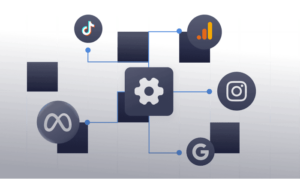The Future of Web Development: Trends to Watch in 2024
The world of web development is evolving rapidly, driven by technological advancements and changing user expectations. As we move into 2024, businesses and developers alike must keep pace with these trends to stay competitive and offer cutting-edge digital experiences. Here are some of the most important web development trends to watch this year.
1. Artificial Intelligence and Machine Learning Integration
AI and machine learning (ML) have already begun transforming the web development landscape. In 2024, their impact will only grow as more websites incorporate intelligent features like chatbots, personalized recommendations, and AI-driven analytics. These technologies enable websites to offer tailored user experiences by learning from user interactions and behavior.
Expect AI to streamline website functionality, improving the ability to predict user preferences, automate customer service, and enhance content personalization.
2. Progressive Web Apps (PWAs) on the Rise
Progressive Web Apps continue to gain traction as they offer a seamless experience across desktop and mobile platforms. PWAs combine the best features of web and native apps, including offline functionality, fast load times, and push notifications. Their appeal lies in their ability to provide an app-like experience without the need for downloading from an app store.
As mobile usage continues to dominate, businesses in 2024 will increasingly adopt PWAs to improve accessibility, user retention, and engagement across devices.
3. Voice Search Optimization
With the rising popularity of voice assistants like Alexa, Google Assistant, and Siri, optimizing websites for voice search is more critical than ever. Voice search changes how users interact with websites, emphasizing the need for conversational content and a focus on natural language processing (NLP).
Web developers will focus on improving voice search functionality by enhancing schema markup, using long-tail keywords, and creating content that answers direct questions. In 2024, this will be essential for businesses aiming to capture voice search traffic.
4. No-Code and Low-Code Development
No-code and low-code platforms are democratizing web development by enabling non-developers to create functional websites and apps. As the demand for fast, agile development grows, these platforms will become more popular among businesses looking to quickly prototype or scale digital solutions without extensive coding knowledge.
In 2024, expect to see more small businesses and startups leveraging no-code tools to build MVPs (minimum viable products) and personalized web experiences.
5. WebAssembly (Wasm)
WebAssembly is transforming the way complex applications are developed for the web. It allows developers to use languages like C++, Rust, and Go to create high-performance web applications that run faster than JavaScript. WebAssembly helps reduce load times and delivers near-native performance for tasks like video editing, 3D modeling, and gaming, all within a browser.
As web performance becomes a top priority, Wasm will play a key role in enhancing website responsiveness and enabling powerful applications to run smoothly in browsers.
6. 3D Web Design and Immersive Experiences
The future of web design is moving toward more interactive and immersive experiences. In 2024, 3D elements will become more prominent on websites, providing engaging visuals that draw users in. This trend goes hand-in-hand with advancements in WebGL and HTML5, allowing developers to incorporate real-time 3D graphics into sites.
Brands will increasingly utilize 3D modeling for product showcases, virtual walkthroughs, and interactive tutorials. These elements create a more immersive user experience and help users engage with products on a deeper level.
7. Dark Mode and Minimalism in Design
The trend toward minimalistic, distraction-free web design continues to grow. Dark mode, in particular, has gained widespread adoption for its eye-friendly aesthetics and energy-saving benefits. Many websites now offer both light and dark mode options, giving users the choice to adjust their viewing preferences based on the environment.
In 2024, expect more websites to adopt minimalist design principles with clean, simple layouts that prioritize user experience while offering flexibility in color themes.
8. Cybersecurity and Privacy-Focused Development
With cyberattacks on the rise, developers are placing a greater emphasis on building secure, privacy-focused websites. As more transactions, personal data, and interactions take place online, businesses must protect user information and ensure data privacy compliance.
In 2024, expect to see a surge in the adoption of security protocols like multi-factor authentication (MFA), SSL certificates, and end-to-end encryption. Additionally, more websites will integrate privacy-first features such as cookie consent management and GDPR-compliant data handling practices.
9. Edge Computing for Improved Performance
Edge computing is changing how websites are hosted and delivered to users. By processing data closer to the source, edge computing reduces latency and improves website performance, particularly for users in remote locations. This is crucial for websites that rely on real-time data processing, such as e-commerce and video streaming platforms.
In 2024, businesses will increasingly adopt edge computing to provide faster, more efficient web experiences that can handle larger volumes of traffic without compromising speed.
10. Sustainability and Green Web Development
As sustainability becomes a global concern, developers are exploring ways to reduce the environmental impact of websites. Sustainable web development practices, such as optimizing websites for faster load times and reducing energy consumption, are expected to grow in popularity. This trend not only benefits the environment but also enhances user experience through faster, more efficient websites.
In 2024, companies will look to create energy-efficient websites that are optimized for minimal resource usage, reflecting their commitment to sustainability.
The web development industry is evolving at lightning speed, with new technologies and practices continually reshaping the digital landscape. Staying ahead of these trends is essential for businesses and developers looking to create dynamic, user-centric websites that meet the demands of tomorrow’s users. By embracing AI, PWAs, voice search, and more, developers in 2024 will be well-positioned to build the future of the web.















 hello@theomnishot.com
hello@theomnishot.com (512)316-2799
(512)316-2799 1937 Harvest Dance
1937 Harvest Dance  Monday → Friday 8am to 6pm
Monday → Friday 8am to 6pm